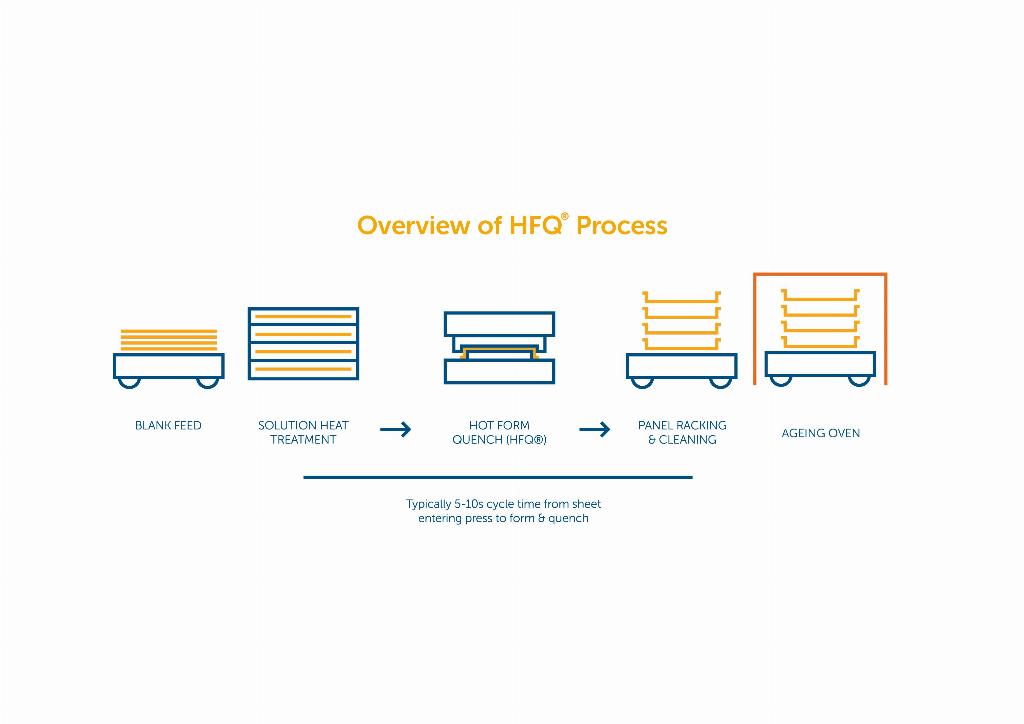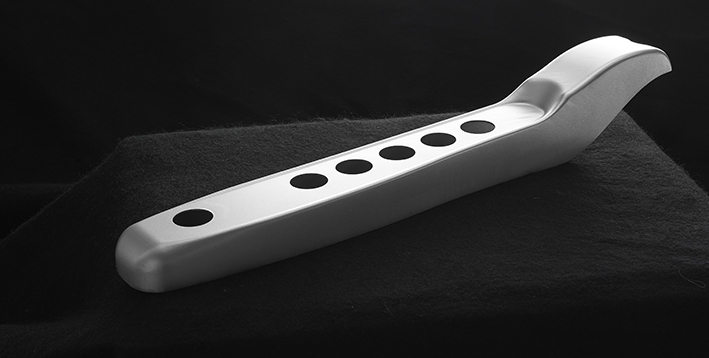Pressing home the advantage

In this article, Aerospace Manufacturing hears how a pressing technique known as HFQ (Hot Form Quench) is helping to shape the future of aluminium in the aviation sector.
Aluminium is increasingly being challenged by alternative materials like carbon fibre, as manufacturers strive to reduce aircraft weight, production time and cost to meet OEM performance targets.
However, a new, enabling manufacturing method to produce complex high strength aluminium pressings – with the potential to further reduce mass of conventionally pressed aluminium structures – is now available.
Impression Technologies Limited (ITL) was formed in 2012 to bring to the market a process that had been developed within Imperial College London, called Hot Form Quench (HFQ). The process is outlined in figure 1 in which a shaped aluminium blank is heated to its solutionising temperature (generally in the region of 500-550°C) before being pressed and rapidly cooled while still in the tool. The now formed part can be subjected to further heat treatment that ensures the material reaches its full strength.
Aluminium parts made using HFQ for structural applications could feasibly offer weight reductions of up to 20% compared with lower strength cold-formed aluminium counterparts. In addition, the increased formability of the material at that temperature means that parts can be deep drawn in a single operation, reducing the need for reinforcements; the removal of the requirement for secondary forming operations also brings a consequent reduction in tooling costs.
The essential features of the technique, says ITL’s director of innovations, Dr Alistair Foster, are that “it combines mechanical and heat treatment processes into a single forming operation.”

In more technical terms, he explains, this is achieved by the fact that the temperature of the material is raised until it reaches the relevant ‘solution heat treatment’ level. At the point the alloying elements form a solution within the material and stay in solution even after the in-tool quenching process provides initially for a “W temper which will naturally age to a T4 condition or which can be artificially aged to an alternative temper, such as T6 condition” – the latter being the strongest possible state for the material.
The blank is held in situ to allow quenching of the formed part. By quenching the part in this way and combining with an optimised age-hardening process the aluminium’s microstructure is stabilised delivering an unrivalled combination of strength, formability and productivity.
Dimensional control
HFQ virtually eliminates ‘springback’, otherwise known as ‘elastic recovery’, compared with cold forming techniques for aluminium. John Sellors, director - applications engineering at ITL, indicates that this has important implications for dimensional control during assembly operations and is something that OEMs have indicated is of interest to them.
“With cold-formed high-strength aluminium especially, springback can be a problem, but with HFQ it is reduced to nearly zero,” he states.
Recently ITL announced in a press release its collaboration in the Future Advance Nacelle Technologies and Structural Integration Concepts (FANTASTIC) project, led by Bombardier, and supported by the UK Aerospace R&T programme, a partnership between Aerospace Technology Institute (ATI), Department for Business, Energy and Industrial Strategy (BEIS), and Innovate UK. The FANTASTIC project looks to enable the design and delivery of high strength, high accuracy, light-weight HFQ formed components in aero approved aluminium at lower cost than existing processes.
In a separate development, Novelis Inc., a leading company in aluminium rolling and recycling, announced it has agreed to partner with ITL to explore innovative ways to increase the broader adoption of aluminium through the hot forming process

Currently ITL has enquiries from a number of aerospace companies for applications, such as seat components, wing ribs, wing flaps, engine inlet lip skins, and leading-edge slats.
In any shape or form
The HFQ technology has the ability to solve many of the forming and assembly related problems caused by other forming technologies like cold forming and super plastic forming. ITL offer aerospace component suppliers the opportunity to install HFQ manufacturing technology within their own organisation by becoming a licensee, which additionally gains access to a wealth of support services to assist them in designing and manufacturing HFQ Technology components.
These services include: Design & Simulation – the ITL team of experts assist companies in maximising the benefit of cost-effective mass reduction for the manufacture of complex high strength HFQ aluminium panels; Development - based on the know-how within the ITL team, that can reduce the number of press tools required to produce a part with a significant reduction in the investment required; Prototyping - at the ITL Coventry, UK facility, it is fully-equipped to carry out in-house prototyping and production runs to support HFQ Technology customers; Tooling - benefits from the in-house prototype and production tooling try-out facility, with assistance from its expert know-how within the team; Training - ITL provides bespoke training courses covering each aspect of the product lifecycle from design through to production.
ITL says it will continually develop the HFQ technology to ensure the benefits of this exciting technology has to offer are maximised for future exploitation.











